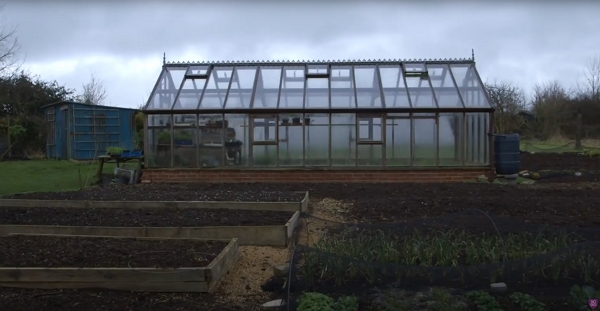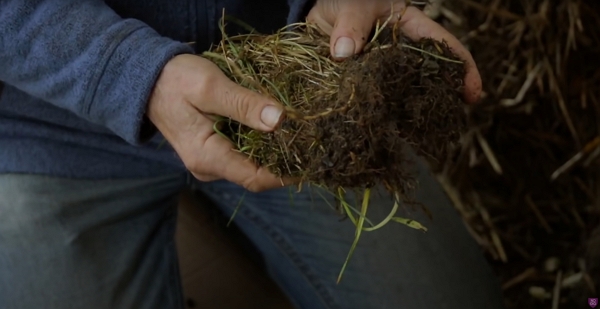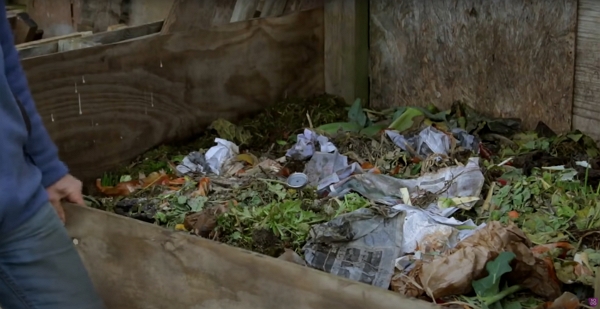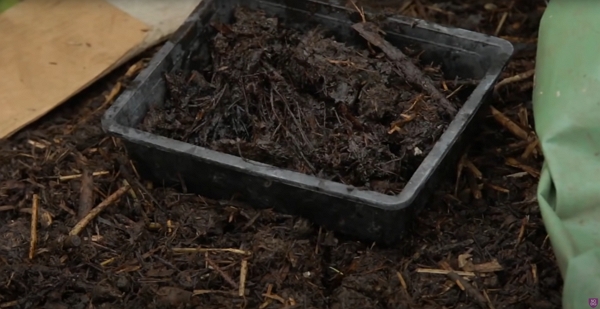The joy of compost is that you can turn any waste, even other people waste into soil food.
Thanks to Charles Dowding for sharing his wisdom and knowledge! I wrote the following notes watching the video published on Charles Dowding’s channel. You can watch it using this YouTube link.
Even in winter, you can do it, so let’s look at how and what.
What can you compost
Well, almost anything with no plastic, industrial wax.
Compost heaps are amazing alchemical processes that degrade pretty much everything.
For example:
- Putting citrus on the heap isn’t popular or even it isn’t recommended. Yet, Charles composts them.
- Kitchen waste is usually more green material than brown.
- Wood ash to the contrary is very much a brown material.
- Charles recommends to put it on the heap rather than directly on the garden beds to use the full potential of the potass as it’s transformed in the heap.
- Stacks of vegetables (like cabbage) need to be cut into small pieces.
- The goal is to maximize the surface area that the bacteria will use to degrade the material.
- Fresh shredded wood is similar and is a woodier material.
- Coffee ground isn’t compost until you put it on the heap.
- It’s considered a green material.
- Also, it isn’t acidic, as some say. Yet, the numbers say that the pH is 6.8 on average.
- Vegetable leaves, especially when they turn yellow.
- Leaves turning yellow stop contributing to the plant’s development and, as they fall, the slugs will get involved. You don’t want that to happen.
- Weeds are scary, but when you can compost it.
- When you pull the weeds, you will get the brown from the soil that will come with it
- Also, popular belief says not to compost perennial weeds. If you continually add material to the heap, the roots of weeds you pulled will die.
- The heat will speed the process to kill them.
- Straw, if you have an organic
Charles simply says to balance material with half green and half brown.
Winter compost versus Summer compost
The summer brings more green material.
In the winter, the brown material dominates more.
Charles layers the material on the heap and you find air thanks to the brown material to help the green material to degrade.
Heat in the compost heap
You can make cool compost, heat isn’t a requirement but it speeds the transformation of the materials into compost.
Between 55 °C and 70 °C, you have what it needs to:
- kill weed seeds
- create a good environment for bateria and fungi
How do you know the heap is finished
Or in other words, when do you know you need to fill up another heap?
You can go on a long time if you don’t add a lot frequently.
That’s when the sizing of the bay is important: it’s better to have a smaller bay that you fill quickly than a bay too large that never gets filled.
Charles’s three-quarter of an acre garden provides a lot of materials. He fills his six large bays (1.5 m by 1.5 m) easily.
One of his bays can contain one ton of compost.
He turns the compost once from the filled bay into the neighbor bay.
What options for container
When you can’t build a structure as big as Charles or if you don’t need so a large structure, use wood pallets.
You just need to cover the sides with cardboard to keep the moisture.
Consistency of the compost
Also, to keep the rain out, use a farmer plastic cover that sometimes they throw away.
Very important
You want your compost to be moist, not wet. If it’s too wet, air is absent and bacteria can’t thrive in an anaerobic environment.
It’s often the missing ingredient of a compost heap!
How to check moisture
To check:
- Pick up a handful of compost
- Squeeze it really hard
If no more than two drops fall off your hands, the moisture is a good.
Don’t just use the look of the compost to judge the moisture levels.
What about the color
A dark brown is better than a jet black concerning compost’s color.
Green waste compost is often very black because it was very hot and it might not be a good news. The level of microbes and micro-organisms is probably low.
Well-rotted cow manure can make nice compost and it’s less dark than the green waste compost.
Finally, the homemade compost with a very good balance of green and brown gives a lighter shade of brown compared to the cow manure compost.
Turning compost
Its purpose is to introduce new air in the compost and one doesn’t need to perform the task regularly.
For example, when the heap is full and of a brown color, you can turn it into another heap, like Charles does.
Turning is also the occasion to break down the lumps.
Turned compost is left alone for another few months.
Sifting the compost isn’t a must. When you want to use it for your potting, then sifting is necessary for obvious reasons.
Myths of compost
The following myths are more annoying than anything else:
- Separating materials that are said not to go on the heap (ex: root of perennial weeds, citrus)
- Instead, cover them well so they can grow in the heap and you will be fine.
- Diseased vegetable leaves
- The diseases, like blight, can’t survive without a living host
- Heat is a must
- No, like I wrote above, it’s a bonus. You can make a great compost with no heat.




